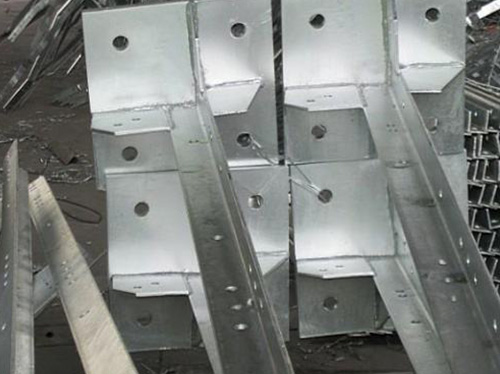
Anshan yongfeng hot galvanizing co. LTD
Marketing: 15040762557
Customer service hotline: 0412-848267
Company email: 1123927151@qq.com
Company website: www.xdqplus.com
Company address: anqi road 34, dadao bend industrial park, anshan city
Criteria and factors
Attached the amount
Corrosion resistance is mainly determined by the thickness of the galvanized layer. Therefore, measuring the thickness is often the basis to determine the quality of the galvanized layer. The galvanized layer is subject to different components, structure and structure of the steel surface and has different reactions. Therefore, a completely uniform coating thickness, in fact, is unlikely. So measurement attached quantity must not as a single point (area) to decide, must feature-the its average adhesion (㎡) zinc weight per unit area (g).
There are many methods to measure adhesion, such as destructive metallographic observation, pickling, non-destructive film thickness gauge, electrochemical method, input and shipment weight difference estimation. Film thickness gauge and pickling are commonly used.
Film thickness gauge is the most common and convenient method to measure the thickness of zinc layer by magnetic induction. Therefore, it is not possible to get an accurate figure at the edge of steel or rough, angular steel or castings. Common iron parts use the original iron material angelica zero base, but can get a fairly accurate number, casting is absolutely not accurate.
The pickling method is the most accurate method for the formal test report, but the accurate figure can only be obtained by paying attention to the fair selection of the upper and lower parts when slicing. But it also has disadvantages, such as time - consuming much, complex steel area is not easy to obtain, too large pieces of the whole pickling. Therefore, it is enough to make full use of the film thickness gauge to control the process in the field, and use the pickling method to do the final detection.
homogeneity
Hot dip galvanized iron and steel is the most prone to rust, is still the thinnest zinc layer, so it is necessary to test whether its thinnest parts meet the standards.
The homogeneity test method is generally used for copper sulfate test, but this method is very problematic for the zinc-coated and alloy coating. The dissolution rate of zinc layer and alloy layer in the copper sulfate test solution was different, and the ratio of zinc to iron in the alloy layer was different. Therefore, it is not very reasonable to judge the uniformity by the repeated times of certain immersion time.
Therefore, in recent European and American specifications and JIS, there is a tendency to abolish this test method, replacing uniformity with distribution, giving priority to visual or tactile perception, and only checking the distribution state with film thickness gauge when necessary.
Due to the difficulty in measuring the area and obtaining the average film thickness of small components with complex shapes, the copper sulfate test method is sometimes used as a reference, but the purpose of determination of adhesion can never be replaced by the copper sulfate test.
